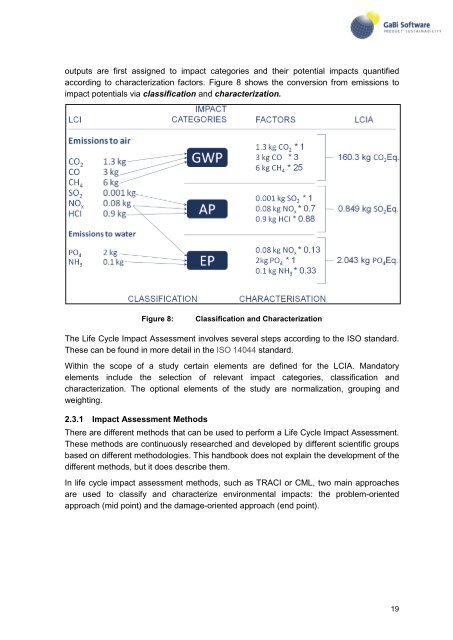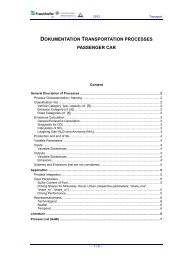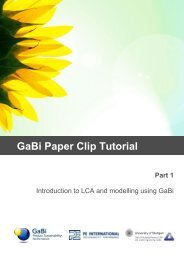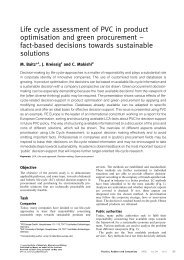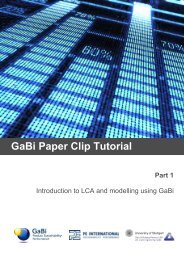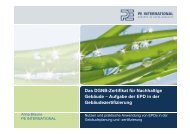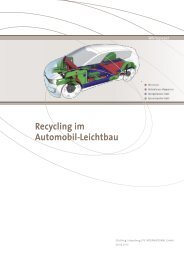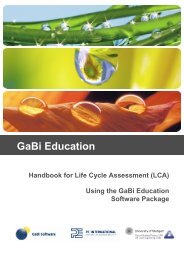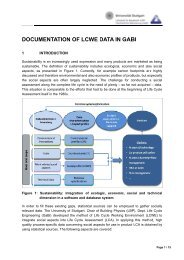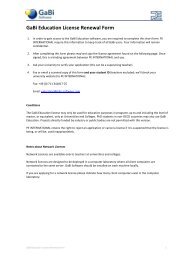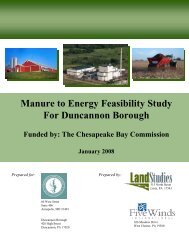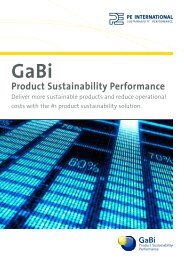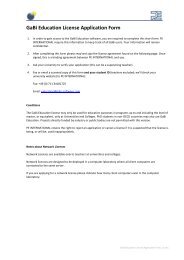GaBi Paper Clip Tutorial - GaBi Software
GaBi Paper Clip Tutorial - GaBi Software
GaBi Paper Clip Tutorial - GaBi Software
You also want an ePaper? Increase the reach of your titles
YUMPU automatically turns print PDFs into web optimized ePapers that Google loves.
outputs are first assigned to impact categories and their potential impacts quantified<br />
according to characterization factors. Figure 8 shows the conversion from emissions to<br />
impact potentials via classification and characterization.<br />
Figure 8: Classification and Characterization<br />
The Life Cycle Impact Assessment involves several steps according to the ISO standard.<br />
These can be found in more detail in the ISO 14044 standard.<br />
Within the scope of a study certain elements are defined for the LCIA. Mandatory<br />
elements include the selection of relevant impact categories, classification and<br />
characterization. The optional elements of the study are normalization, grouping and<br />
weighting.<br />
2.3.1 Impact Assessment Methods<br />
There are different methods that can be used to perform a Life Cycle Impact Assessment.<br />
These methods are continuously researched and developed by different scientific groups<br />
based on different methodologies. This handbook does not explain the development of the<br />
different methods, but it does describe them.<br />
In life cycle impact assessment methods, such as TRACI or CML, two main approaches<br />
are used to classify and characterize environmental impacts: the problem-oriented<br />
approach (mid point) and the damage-oriented approach (end point).<br />
19


